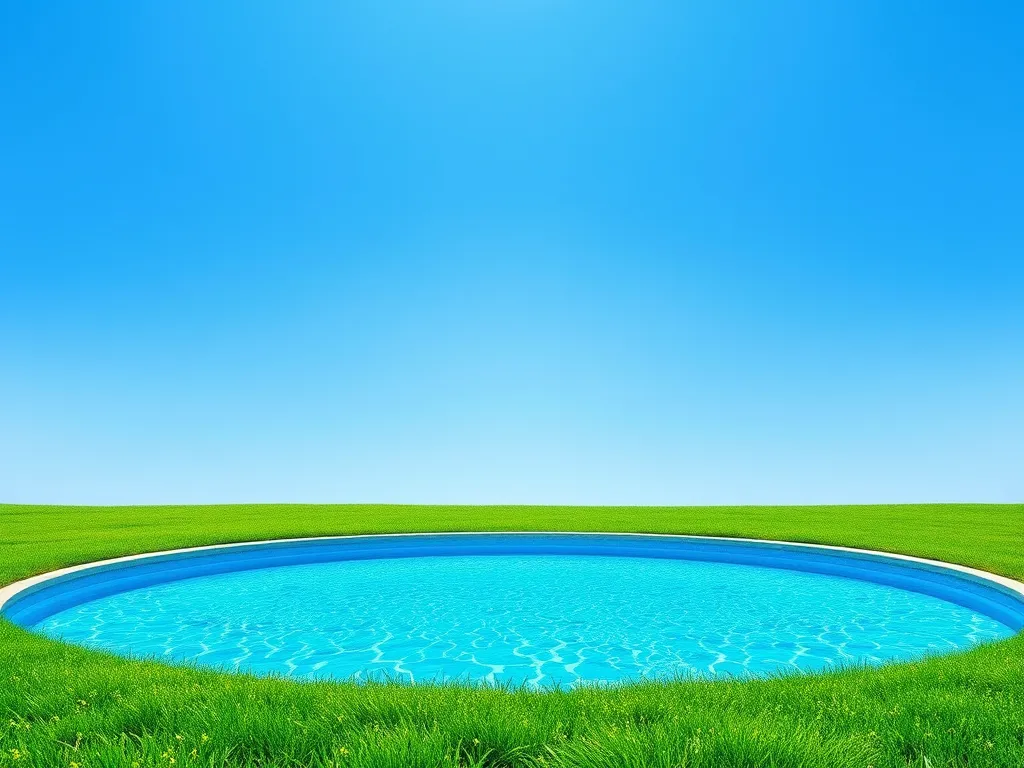Pool Volume Calculator: Measure Your Pool’s Water Capacity
Published on: April 8, 2025 | Last Updated: April 13, 2025
Written By: Rachael Weatherbottom
Knowing your pool’s volume helps with chemical dosing, equipment choices, and maintenance. This calculator works for both rectangular and circular pools. You’ll only need basic measurements like length, width, and depth. We’ll convert everything to gallons automatically.
Pool Volume Calculator
- Select your pool shape
- Enter measurements in feet
- Click Calculate
Factors Influencing Pool Volume Accuracy
Proper pool maintenance begins with knowing your water volume. Four primary elements dictate calculation precision.
Pool Shape Complexity
Geometric form determines which mathematical formulas apply. Rectangular pools use length × width × depth. Circular designs require π × radius² × depth. Freeform/kidney-shaped pools need segmented measurements or digital mapping tools.
- Rectangular: Simplest to calculate with laser measures
- Circular/Oval: Require diameter verification at multiple points
- Lazy River/Infinity: Professional hydrostatic surveys recommended
Depth Variations
62% of residential pools have non-uniform depths. Measure shallow and deep ends separately. For gradual slopes, take 3-5 depth readings along the pool’s length.
| Slope Type | Measurement Points | Average Depth Formula |
|---|---|---|
| Drop-Off | 2 (Shallow + Deep) | (Min Depth + Max Depth)/2 |
| Gradual | 3-5 | Sum of Depths ÷ Number of Measurements |
Water Displacement Factors
Built-in features alter total volume. Subtract these elements from gross calculations:
- Steps/Benches: Typically displace 50-300 gallons
- Diving Boards: Up to 75 gallons displacement
- In-Pool Furniture: Variable based on size
Mathematical Formulas for Different Pool Types
Select the appropriate equation based on your pool’s architectural design.
Rectangular Pool Volume Formula
Length (ft) × Width (ft) × Average Depth (ft) × 7.48 = Total Gallons
Example: 20′ x 40′ pool with 5.5′ average depth 20 × 40 × 5.5 × 7.48 = 32,912 gallons
Circular Pool Calculations
π × Radius² × Average Depth × 7.48 Radius = Diameter ÷ 2
15′ diameter pool with 4′ depth: 3.14 × (7.5)² × 4 × 7.48 = 5,290 gallons
Irregular Shape Methodology
Break complex shapes into measurable segments. Calculate each section separately then sum the totals. For kidney-shaped pools:
- Measure longest length (L) and widest width (W)
- Calculate approximate surface area: 0.45 × L × W
- Multiply by average depth and 7.48
Also See: Coping Cost Pool Calculator for Quick Estimates

Cost Implications Of Water Volume
Every 1,000 gallons impacts ongoing maintenance expenses:
| Expense Category | Cost per 1k Gallons | Annual Impact* |
|---|---|---|
| Chlorine | $1.20-$2.10 | $175-$306 |
| Heating (Gas) | $3.80-$5.25 | $554-$766 |
| Water Replacement | $4.50-$18 | $164-$657 |
*Based on 25,000-gallon pool, regional price variations apply
Chemical Dosage Economics
Miscalculating volume by 10% increases chemical waste by 15-18%. For example:
- Chlorine: 1 ppm requires 0.13 oz per 1,000 gallons
- pH Adjusters: 1 lb of soda ash treats 10,000 gallons
Common Volume Calculation Errors
Industry surveys show 43% of pool owners make these mistakes:
Measurement Inaccuracies
- Using water depth instead of pool structure depth
- Neglecting coping/overhang measurements
- Assuming perfect right angles in construction
Conversion Oversights
Critical conversion factors often miscalculated:
| Unit | Multiplier |
|---|---|
| Cubic Feet to Gallons | 7.48052 |
| Litres to Gallons | 0.264172 |
| Cubic Meters to Gallons | 264.172 |
Seasonal Volume Considerations
Winterization Requirements
Proper water reduction prevents freeze damage:
- Vinyl liners: Lower 4-6″ below skimmer
- Concrete pools: 12-18″ reduction in freezing climates
Evaporation Rates
Typical summer water loss:
| Climate Zone | Daily Loss | Monthly Impact |
|---|---|---|
| Arid | 0.25″-0.5″ | 1,875-3,750 gal* |
| Humid | 0.1″-0.25″ | 750-1,875 gal* |
*Based on 500 sq ft surface area

FAQs: Pool Volume Fundamentals
Why Does Volume Accuracy Matter?
Chemical imbalances occur at 8% volume variance. Salt systems become ineffective at 15% error margin. Pump sizing requires ±5% accuracy.
How to Adjust for Rounded Corners?
Subtract 2-3% from rectangular calculations for radius corners. Measure corner arc length: Radius (ft) × 1.5 = Deduction Percentage
Specialized Pool Types
Infinity Edge Calculations
Account for catch basin volume: Main Pool + (Catch Basin Length × Width × Depth × 7.48)
Lap Pool Dynamics
Constant 4-5′ depths simplify calculations but require precise turnover rates: Volume ÷ Pump GPM × 60 = Turnover Hours
Maintenance Optimization Strategies
Water Conservation Techniques
- Cover use reduces evaporation by 95%
- Backwash recycling systems save 300-500 gal/month
Leak Detection Methods
Bucket test procedure: 1. Fill pool to normal level 2. Place weighted bucket on step 3. Mark water levels inside/outside 4. Compare 24-hour differences
For advanced volume tracking tools and custom chemical calculators, visit My Pool Calculator. Our systems integrate real-time weather data and equipment specs for precision management.
Additional Resources for You:
- Pool & Hot Tub Alliance (PHTA). (2021). ANSI/APSP/ICC-11 Standard for Water Quality in Public Pools and Spas. Alexandria, VA: PHTA.
- Pool Volume Calculator | Pool Maintenance | Swimmingpool.com
- Pool Volume Calculator: How Many Gallons of Water Does Your Pool Hold?
- Swimming Pool Volume Calculator | Poolbots
- Pool Water Volume Calculator In Gallons with Size Charts
A pool care geek who’s been testing water chemistry since she was tall enough to reach the skimmer.
Pool Calculators, Pool Volume


